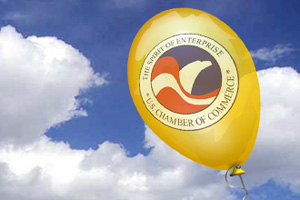From: Josh Harkinson
Sent: Wednesday, October 21, 2009 12:49 PM
To: Michael Burnham
Cc: James Surowiecki; Shawn Zeller; Mary Esch; Clark Hoyt
Subject: Request for Correction
Dear Michael,
As a close follower of all things related to the US Chamber of Commerce, I’ve admired your recent reporting on how the group set its climate change policies. In particular, I appreciated your October 9th story in Greenwire and the New York Times in which you quoted an anonymous source who said, contrary to the Chamber’s claims, that its policies are ultimately set by its staff in concert with large donors. Your work built upon a similar story I’d reported two days earlier. So it’s with regret that I write to point out an inaccuracy in your more recent work and ask for a correction.
As you may be aware, on October 13th I noted that the US Chamber of Commerce does not have the 3 million members that it claims. At a press conference the next day, the Chamber admitted—as it has on a few other rare occasions—that it actually has 300,000 members. Even so, you have continued to report the 3 million number. On October 16th, in a story reprinted in the Times, you wrote that the Chamber has “more than 3 million members—a figure that reflects dues-paying executives and local chambers of commerce.”
While I appreciate your effort to explain the meaning of the “3 million” claim, your clarification is unfortunately wrong and misleading. It would more accurately and cumbersomely read: “a figure that reflects dues-paying executives and non-dues-paying members of local chambers of commerce.” In other words, the US Chamber is dubiously claiming the members of local chambers as its own. In a hope that you and other reporters will abandon this kind of clunky and ridiculous qualifier in favor of simply using the real membership number, here again are ten reasons why the members of local chambers are in no way members of the national group:
- The vast majority businesses that US Chamber is counting as members (based on their memberships in local chambers) don’t qualify for the US Chamber’s membership benefits.
- Most local chambers have declined to allow the US Chamber to automatically enroll their members, even though the US Chamber offers to enroll local chambers’ small businesses free of charge.
- Local businesses contacted by Mother Jones often did not know that the US Chamber was counting them as members.
- According to the US Chamber website: “The US Chamber is not a governing body, chartering agent, or regulatory agency for chambers of commerce, and we have no say in how chambers decide to run themselves. Any community can organize and support a chamber of commerce.”
- Although some local chambers pay dues to the US Chamber, the dues add up to only $2500 per year for a local chamber that is among the ten largest in the country. Dues from local chambers probably account for less than 4 percent of the US Chamber’s budget.
- Local chambers have no effective control over the US Chamber’s policies or leadership. Local chambers do not get to elect the US Chamber’s board, which is exclusively selected by sitting board members. Of the 118 members of the US Chamber board, only one represents a local chamber of commerce. The vast majority are large corporations.
- Leaders of some dues-paying local chambers deny that it speaks for their members. “They don’t represent me,” Mark Jaffe, CEO of the Greater New York Chamber of Commerce, told me.
- For years, the US Chamber claimed around 200,000 members, until 1997, when it suddenly decided to start claiming an “underlying membership” of 3 million. It has since dropped the “underlying” qualifier.
- The US Chamber’s belated answer to my reporting didn’t explain how its 2.7 million non-direct “members” have any say in setting its policies.
- When the Chamber was questioned about these and other glaring holes in its “3 million” claim, it refused to respond.
In short, Michael, just because the national and local groups are both called “chambers of commerce” doesn’t mean that they share memberships. And though the US Chamber continues to cite the “3 million” number on its website and press releases, I’m not the only reporter who refuses to report that claim. The Wall Street Journal, never known as a big enemy of US Chamber, routinely uses the 300,000 figure. I know that it’s got to be hard for you to ditch the bigger number after your news outlet has used it more than 25 times* in the past two years, but hey, better late than never!
P.S.: I will be posting this letter on the Mother Jones blog (this version includes a few updates).
P.P.S: I’ve CC’d Clark Hoyt, public editor of the New York Times; James Surowiecki of the New Yorker, who, to be fair, might have sent his story to press before mine came out (Update: He did, and he agrees that the real number is around 300,000); Shawn Zeller of Congressional Quarterly, who lamely says the US Chamber has “roughly 3 million members”; and Mary Esch of the AP, who is merely technically correct in reporting that the chamber “calls itself” a group that represents 3 million member companies.
*Between early 2008 and October 14th, 2009, E&E Publishing, which owns Greenwire and E&E News, used the 3 million figure at least 25 times. In the same period, the New York Times used the figure seven times.















